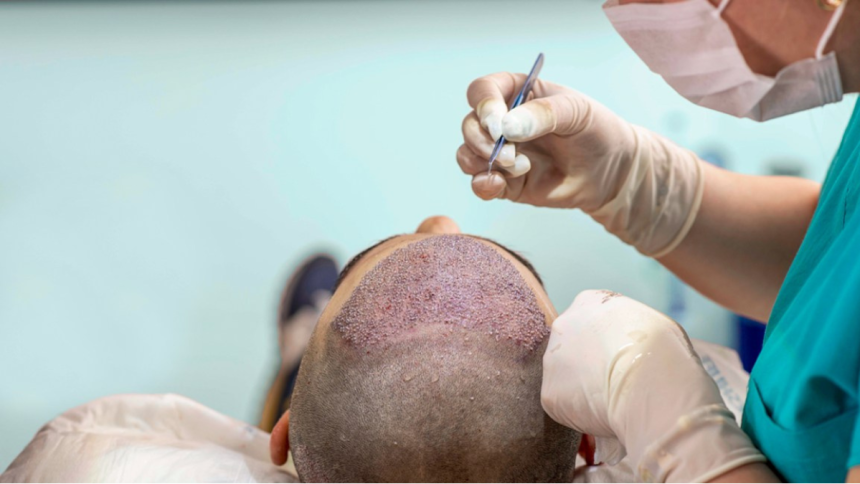When it comes to hair transplants, most people think it’s a one-size-fits-all solution — extract the hair, implant it, wait for results. But if you have Afro-textured hair, the process is anything but straightforward.
Here’s the truth: Afro hair follicles are structurally different from straight or wavy hair types. That difference affects everything — from how the hair grows to how it must be handled during a transplant. And unless your surgeon truly understands the science behind Afro follicles, you could end up with poor results, visible scarring, or worse, no regrowth at all.
Let’s unpack what makes Afro hair transplant so unique — and why technique isn’t just important, it’s everything.
What Makes Afro Hair Follicles So Special?
First, let’s talk about what sets afro hair apart. If you’ve got afro-textured hair—whether African, Afro-American, or Afro-Caribbean—you know it’s all about those tight curls and incredible volume. But what’s happening beneath the surface is just as unique.
Afro hair follicles are curved, almost like a gentle spiral, unlike the straighter follicles of other hair types. This curvature is what gives afro hair its signature coil and bounce, but it also makes transplanting it a whole lot trickier.
Here’s the deal: the average scalp with afro hair has fewer follicular units per square centimeter—about 65-85 compared to up to 100 for straighter hair types. That lower density means every single follicle is precious when it comes to transplants.
Plus, the skin of people with afro hair often has higher melanin content, which can make it more prone to keloid scarring (those raised, thickened scars) or hyperpigmentation after surgery. So, when you’re thinking about a hair transplant, the technique has to be spot-on to avoid damage and get that natural look you’re after.
Why Technique Is Everything
Okay, so why does the technique matter so much? Imagine trying to plant a delicate, curly vine in a garden without breaking its roots. That’s what transplanting afro hair is like. The wrong move can damage the follicle, mess up the curl pattern, or even lead to scarring that’s hard to hide. Here’s why technique is non-negotiable:
- Curved Follicles Are Fragile: Because afro hair follicles curve under the skin, standard extraction tools can accidentally slice through them (a problem called transection). A damaged follicle won’t grow, and that’s a big setback for your transplant.
- Preserving That Curl: You want your new hair to look like your hair, right? If the surgeon doesn’t implant the follicles at the right angle, you could end up with hair growing in weird directions or losing its natural curl. That’s not the vibe.
- Minimizing Scarring: For folks with darker skin tones, the risk of keloid scars is higher. Techniques that involve big incisions, like the older Follicular Unit Transplantation (FUT), can leave noticeable scars, especially if you like to rock a short hairstyle.
- Maximizing Coverage: With fewer follicles to work with, surgeons need to be strategic about where and how they place each graft to make your hair look full and natural.
This is where choosing the right method—and the right surgeon—makes all the difference. Let’s break down the techniques that are commonly used and why some are better than others for afro hair.
The Go-To Techniques for Afro Hair Transplants
Not all hair transplant methods are created equal, especially when it comes to afro hair. Here’s a rundown of the main techniques and how they stack up:
Follicular Unit Extraction (FUE)
FUE is the gold standard for afro hair transplants, and for good reason. It involves extracting individual follicles using a tiny punch tool—think of it like carefully plucking each hair with its root intact. For afro hair, surgeons use specialized punches designed to follow the follicle’s curve, reducing the risk of damage.
FUE leaves tiny, dot-like scars that are barely noticeable, which is a huge plus for anyone prone to keloids. It’s precise, minimally invasive, and ideal for creating that natural look.
Follicular Unit Transplantation (FUT)
FUT, sometimes called the “strip method,” involves removing a strip of scalp from the donor area (usually the back of the head) and dissecting it into individual grafts. While it’s great for getting a lot of grafts at once, it’s not the best choice for afro hair.
Why? It leaves a linear scar, which can be more visible on darker skin or with shorter hairstyles. Plus, the extraction process doesn’t account for the curved follicles as well as FUE does.
Direct Hair Implantation (DHI)
DHI uses a special tool called a Choi implanter pen to place follicles directly into the scalp. It’s super precise for straight hair, but for afro hair? It’s a bit controversial. The pen can struggle to maintain the natural curl pattern, and some experts say it’s not as effective for tightly coiled hair. That said, it’s still an option in some clinics, especially for less complex cases.
Manual FUE
This is like FUE’s artisanal cousin. Instead of relying on automated tools, the surgeon extracts and implants each follicle by hand. It’s time-consuming, but it gives the surgeon ultimate control, which is crucial for handling afro hair’s unique curves. Many top clinics lean on manual FUE for the best results.
The Game-Changer: Sagittal-Oblique Channel Technique
Now, let’s talk about something exciting—the Sagittal-Oblique Channel Technique, developed by the folks at Asli Tarcan Clinic in Istanbul. This isn’t just a tweak to existing methods; it’s a full-on innovation designed specifically for African, Afro-American, and Afro-Caribbean hair types. If you’ve been researching afro hair transplants, you’ve probably seen this technique turning heads, and here’s why.
The Sagittal-Oblique Channel Technique is all about precision and respect for afro hair’s natural structure. Unlike traditional methods that might force curly follicles into straight-line incisions, this technique creates tiny channels at an angle that mimics the hair’s natural growth direction. Here’s what makes it stand out:
- Preserves Curl Patterns: The angled channels ensure that transplanted hair grows in its natural, coiled glory, avoiding that awkward, unnatural look.
- Reduces Scalp Trauma: By minimizing tissue disruption, this method lowers the risk of scarring and inflammation—huge for anyone worried about keloids.
- Natural, Long-Lasting Results: The technique’s precision means better graft survival and a fuller, more seamless appearance over time.
Asli Tarcan Clinic has been getting a lot of buzz for this approach, and it’s no surprise. They’ve tailored it to tackle the exact challenges that make afro hair transplants tricky, from curved follicles to sensitive skin. If you’re considering a transplant, their expertise in this technique is worth checking out.
Beyond the Hairline: Beard Transplants for Afro Hair
While we’re on the topic of transplants, let’s not forget about facial hair. Beard transplants are gaining popularity, and for folks with afro hair, the same principles apply. The curved follicles and potential for scarring mean you need a skilled surgeon who knows their stuff. Asli Tarcan Clinic also specializes in beard transplants, using techniques like FUE to create natural-looking, full beards that complement afro hair’s texture. Curious? Check out their beard transplant details.
What to Look for in a Surgeon
Technique is only half the story—your surgeon’s expertise is the other half. Here’s what to keep in mind when choosing a clinic:
- Experience with Afro Hair: Not every surgeon is trained to handle afro hair’s unique challenges. Look for someone with a proven track record in afro hair transplants.
- Customized Tools: Ask if they use specialized punches or techniques like the Sagittal-Oblique Channel Technique to minimize damage.
- Before-and-After Photos: Real results speak louder than promises. Check out the clinic’s portfolio to see how their afro hair transplants turn out.
- Patient Education: A good surgeon will walk you through the process, set realistic expectations, and explain how they’ll handle your specific hair type.
Recovery is another thing to prep for. Expect some redness and itching for a few weeks, with full results taking 12-18 months to show up. Following your surgeon’s aftercare plan—like avoiding harsh chemicals or tight hairstyles—will help you get the best outcome.
Lynn Martelli is an editor at Readability. She received her MFA in Creative Writing from Antioch University and has worked as an editor for over 10 years. Lynn has edited a wide variety of books, including fiction, non-fiction, memoirs, and more. In her free time, Lynn enjoys reading, writing, and spending time with her family and friends.















